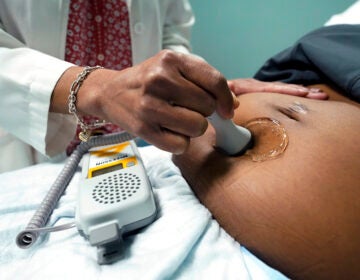Delaware takes aim at health disparities that show higher rates of diabetes and other ailments for Black residents
Health disparities across different races and ethnicities in Delaware remain a persistent concern, particularly for chronic illnesses.
Listen 1:51
(Yulia Petrova/Big Stock)
Despite greater access to care in recent years, health disparities across different races and ethnicities in Delaware remain a persistent concern, particularly for chronic illnesses.
Two new efforts in Delaware hope to better address those issues that lead to a disparity of health outcomes. Last month, the state launched an online dashboard to allow better tracking of racial disparities in both health and income. The dashboard launch was followed by the announcement of the largest federal research grant in Delaware State University’s history. The five-year, $18 million grant will fund the school’s Interdisciplinary Health Equity Research Center to study Delaware’s health disparities.
Both nationally and locally, a number of social factors are largely to blame for that disparity. Those social determinants include economic stability, access to and the quality of education, access to and the quality of health care, neighborhood, and environmental factors.
Communities of color have greater rates of chronic disease, diabetes, hypertension, and maternity-related illness and mortality, according to the Centers for Disease Control and Prevention.
According to a 2019 study by the American Diabetes Association, 37.3 million Americans, or 11.3% of the American population, have diabetes. More than 14% of Native Americans have diabetes, as do 12% of Black residents, and nearly 12% of Latinos.
Diabetes has been on the rise in Delaware — from 2003 to 2019, the prevalence rate increased from 8% to 13%, according to state health data. Since Black Delawareans (17.5%) have a higher prevalence of diabetes than white Delawareans (11.8%), their death rate from the disease is more than twice that of white residents.
“It’s much more than genetic,” said Wendy Bailey from the Delaware Division of Public Health.
While genetics are some of the underlying issues, Bailey said access to health care and availability of healthy, fresh foods are factors that must be addressed. Those issues contribute to health problems for residents in urban areas like Wilmington where there’s less access to fresh food. It also causes problems in more rural areas downstate where there’s less access to technology and health care.
Research conducted by the University of Delaware’s Institute for Public Administration shows 27% of Delaware residents live in areas with just one grocery store, while 61% of residents live without easy access to even one.
George Morales Jr., a project engineer from Wilmington, said he sees differences within his ethnic group, which includes Mexican and Puerto Rican heritage, as well as within his hometown of Wilmington. Before attending the University of Delaware, he lived in Barstow, California, where he felt he had almost no access to fresh foods.
“In Wilmington, there’s definitely pockets of food deserts,” he said. “I know this because I have to travel outside of Wilmington towards Concord Pike by the mall to get those nicer options to care about my health.”
Compared to the other counties, Bailey said, Kent County has a slightly greater rate of people with diabetes.
With four medical centers spread out across the state, Westside Family Healthcare can immediately identify these disparities between those towns.
“There’s more obesity in our Hispanic and our Black population in Delaware than in our white non-Hispanic population,” said Megan Werner, the associate medical director of Population Health and Quality at Westside Family Health Care. Hypertension, heart attacks, strokes, and cancer are on Westside’s list of common health ailments, too.
Language and cultural barriers are contributing factors to health disparities, said Werner, with Westside having 40% of their patients served in a language other than English.
“Aunque yo no hablo inglés, siempre me dan a alguien a con quien puedo hablar en francés o español,” said Alimatou Semega.
“Even if I don’t speak English, they always give me someone to speak to in French or Spanish,” said Alimatou Semega.
Semega is a Wilmington resident with three children who chooses Westside as her preferred medical center. She said her experience there has been positive, but she recognizes that some people do not receive similar quality care. She urged people in her community to find a doctor they can trust and receive the quality care they require.
Quality education is another issue that community members say contributes to the disparities.
“Si estudias en una escuela, que no está tan tan bien, no va a tener un buen trabajo. Y si no tiene un buen trabajo, no puede tener dinero para pagar una salud mejor,” said Semega.
“If you study in a school that is not so good, you will not have a good job. And if you don’t have a good paying job, you can’t have the money to pay for better health,” said Semega.
Werner says that those with less education are more likely to work in jobs that require long hours, which often makes it difficult to find time to exercise and stay healthy.
“Unfortunately, we’re living in a world where the more you do, the more you get,” said Isaiah Lee, a musician from Wilmington. He said with greater education, individuals may better comprehend their bodies, communicate their concerns to physicians, and intellectually understand what doctors are saying. However, many people don’t have the financial means to pursue further education.
While there are so many competing demands in life, the Division of Public Health’s Bailey said health and well-being need to be a priority.
She encouraged residents who may be especially at risk to get involved with the DPH’s Diabetes and Heart Disease Prevention and Control Program, which offers activities and education to reduce rates of disease. “We have a total of over 17% participation from African American communities and more than 12% participation from Hispanics,” she said, but urged others to start getting invested in their own health.
WHYY is your source for fact-based, in-depth journalism and information. As a nonprofit organization, we rely on financial support from readers like you. Please give today.







